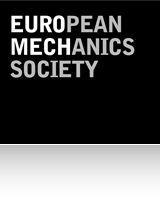637 – A multidisciplinary discussion on binder cohesion & multi-functional building materials
Chairperson:
Agathe Robisson
Head Research Unit Building Materials and Technology
Institute for Material Technology, Building Physics and Building Ecology
TU Wien, Faculty of Civil Engineering
Lilienthalgasse 14
A-1030 Vienna, Austria
Email: agathe.robisson@tuwien.ac.at
Co-chairperson
Katerina Ioannidou
CNRS/U.
Montpellier, France
Teresa Liberto
TU Wien, Austria
In this colloquium, we want to further knowledge on binder cohesion for efficient Portland cement manufacturing and usage, as well as to bring novel concepts for multi-functional building materials. The results of this meeting should support the challenging objective set by the international energy agency (iea) to reduce CO2 emissions in the cement industry by 24 % in 2050 from the 2018 level and the overarching goal of achieving net-zero in buildings, to meet the Paris climate goals.
The extraordinary mechanical properties of cement, achieved only a few days after a fluid-to-solid transition, remain difficult to explain, but recent advances have shown that the high binder cohesion is related to the high surface charge densities around the hydrating cement grains and the strong confinement of the interacting surfaces. The understanding of the governing factors controlling these interactions is key to both optimize the manufacturing of Portland cement and to identify novel binders while decreasing the energy demand and CO2 emissions without compromising on the exceptional properties of existing Portland cement. In parallel, cement can be part of designed composites having multi-functions, such as energy storage, CO2 storage capacity or thermal capacitors.
The colloquium will start with keynote talks during the first session and the next 4 half-days will be dedicated to four topics, namely: (1) Mechanics of cohesion in cementitious materials: Theory; (2) Physico-chemical characterization of cementitious materials; (3) Mechanics of cementitious materials in their fresh and early-age states; and (4) Viewpoints on sustainability in construction and concepts of multifunctional cementitious materials.
